Literary rating: ★★★★★
Kick-butt quotient: ☆
 Barb and I discovered evangelical Christian author Mary Connealy through her Sophie’s Daughters trilogy, partially set in Montana in the years from 1878 to 1884. Several characters who figure in her earlier Montana Marriages trilogy, of which this novel is the third, also play important roles in the later one. So we were interested in their back stories; and when I found this book in a thrift store, it was a natural purchase! (We’ve also just started reading the second installment; long story!) This means we’re reading the trilogy in reverse order; so we started with much more knowledge of the characters’ future than the original readers would have (the read was more like a visit with old friends). However, I’ll avoid spoilers in this review. (Obviously, though, it might contain “spoilers” for the earlier Montana Marriages novels.)
Barb and I discovered evangelical Christian author Mary Connealy through her Sophie’s Daughters trilogy, partially set in Montana in the years from 1878 to 1884. Several characters who figure in her earlier Montana Marriages trilogy, of which this novel is the third, also play important roles in the later one. So we were interested in their back stories; and when I found this book in a thrift store, it was a natural purchase! (We’ve also just started reading the second installment; long story!) This means we’re reading the trilogy in reverse order; so we started with much more knowledge of the characters’ future than the original readers would have (the read was more like a visit with old friends). However, I’ll avoid spoilers in this review. (Obviously, though, it might contain “spoilers” for the earlier Montana Marriages novels.)
This tale opens in late spring/early summer, 1877, as young Wade Sawyer is awakened by gunfire as he’s sleeping in his small cabin high in the Montana Rockies. The shots come from the nearby small Indian village, which is being massacred by four masked whites. Arriving too late to prevent the deaths of most of the inhabitants, Wade manages to wound one of the fleeing murderers, and finds Glowing Sun, a young woman raised for the past dozen years by the Salish (called Flathead by the whites), ever since they found her alone at about the age of eight after disease killed her white family, still alive. (One of the killers had tried to abduct her, but she slashed his face with her knife and escaped.) Her white name, as she recalls, is Abby, and she and Wade have met previously (as recounted, apparently, earlier in the trilogy), last fall –and were in fact attracted to each other; but she had an Indian fiance at the time, through an arranged engagement. He’s now dead; and when she’s cast out by a surviving matriarch who never liked her (and who blames her for attracting the massacre, assuming that the attackers’ motive was rape), she’s left alone in the world again. Soon after, Wade’s summoned to the bedside of his estranged rancher father, injured and maybe dying; and since he won’t desert Abby, and she believes responding to the summons is his duty, she comes along with him.
Like all Connealy novels, this is a clean “romance” (in the modern-day book trade sense); but it has more going for it than romance (otherwise, I wouldn’t have read and liked it!). For one thing, it’s a perceptive exploration of cross-cultural romance, of the specific clashing cultures of whites and Indians in the late 19th-century West, and an ethically-aware indictment of the former’s treatment of the latter. (Abby doesn’t have much use for the attitudes and practices of a white culture she’s mostly long abandoned, though she hasn’t forgotten the language, and a lot of her criticisms strike home.) It’s also a hard look at the dynamics of a dysfunctional, abusive family –because Wade’s estranged from his dad for good reason!– at co-dependency and how insidious it can be, and what does (or doesn’t) contribute to familial healing. There’s also a decided helping of Western-style mystery, because there’s intrigue afoot on the Sawyer ranch. Who’s behind the outbreak of cattle rustling in the area? And who were the attackers of Abby’s village, and what was their real motive?
Connealy’s a Christian author, whose world-view influences her writing. Christian characters are common in her novels (Red Dawson, a supporting character here, is a lay preacher as well as a rancher). Wade has a sincere Christian faith, as does Abby, fostered in her case by the missionary activity of real-life Jesuit Pierre-Jean De Smet (1801-1873) and his colleagues, who really did have considerable success in their work among the Salish, and whose treatment here is very positive. (The author’s approach to Christian faith is –commendably, IMO– nondenominational, though sectarian rivalries and animosities weren’t nonexistent in the real 19th-century West.) It’s seen here as a genuine source of moral reformation, courage in adversity, and guidance and help in daily life; but though it’s referred to more here than in the later trilogy, I wouldn’t describe this one as “preachy.”
Christian ethics, with its basis in the love commands, also raises a serious issue for reflection, when it needs to be lived out in a violent environment, among people some of whom are perfectly willing to kill you, and others, to get things they want. Wade wrestles with this some, as does Abby –in fact, more so, since while Wade wears a gun and can use it, she’s considerably more combat capable than he is. (She’s also a stronger-willed personality than he is, and the more dominant partner in the relationship –okay, that word’s not a spoiler, any reader knows these two are destined for each other!– and Wade’s willing to recognize that there’s nothing wrong with that.) While she’s not into guns (though if she slugs you in the head with one, you won’t get up for awhile), she’s handy with her knife, and it doesn’t leave her person –unless she needs to throw it. Her personality could best be described as hot-tempered and fierce. The conclusion she comes to is that forcibly defending yourself and others IS morally right, but relishing the damage done isn’t; and she’s honest enough to admit that she needs to work on her attitude in that area. So when the chips are down here, the main question may not be, will our hero rescue the damsel in distress? Given their respective skill sets, it might be, will our tough damsel rescue her guy in distress? :-)
Author: Mary Connealy
Publisher: Barbour Publishing; available through Amazon, both for Kindle and as a printed book.
A version of this review previously appeared on Goodreads.





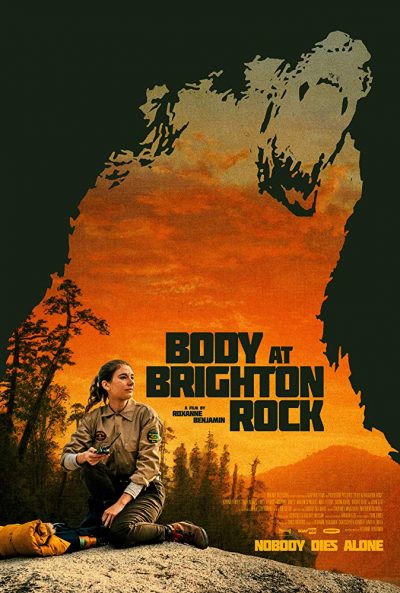 Proving not quite able to sustain its running time, this ends up collapsing under its own weight. The lead actress tries her best, and her character is likeable enough, but in her debut leading a feature, isn’t able to carry a film in which she is in virtually every scene. Fontes plays park ranger Wendy, whose duties are typically limited to handing out leaflets and lecturing small children about the dangers of forest fires. To help out a colleague, she takes on a more strenuous task, only to find herself lost in the great outdoors, as darkness approaches. She then stumbles across a body at the foot of a cliff: was it death by misadventure, or something more malicious?
Proving not quite able to sustain its running time, this ends up collapsing under its own weight. The lead actress tries her best, and her character is likeable enough, but in her debut leading a feature, isn’t able to carry a film in which she is in virtually every scene. Fontes plays park ranger Wendy, whose duties are typically limited to handing out leaflets and lecturing small children about the dangers of forest fires. To help out a colleague, she takes on a more strenuous task, only to find herself lost in the great outdoors, as darkness approaches. She then stumbles across a body at the foot of a cliff: was it death by misadventure, or something more malicious?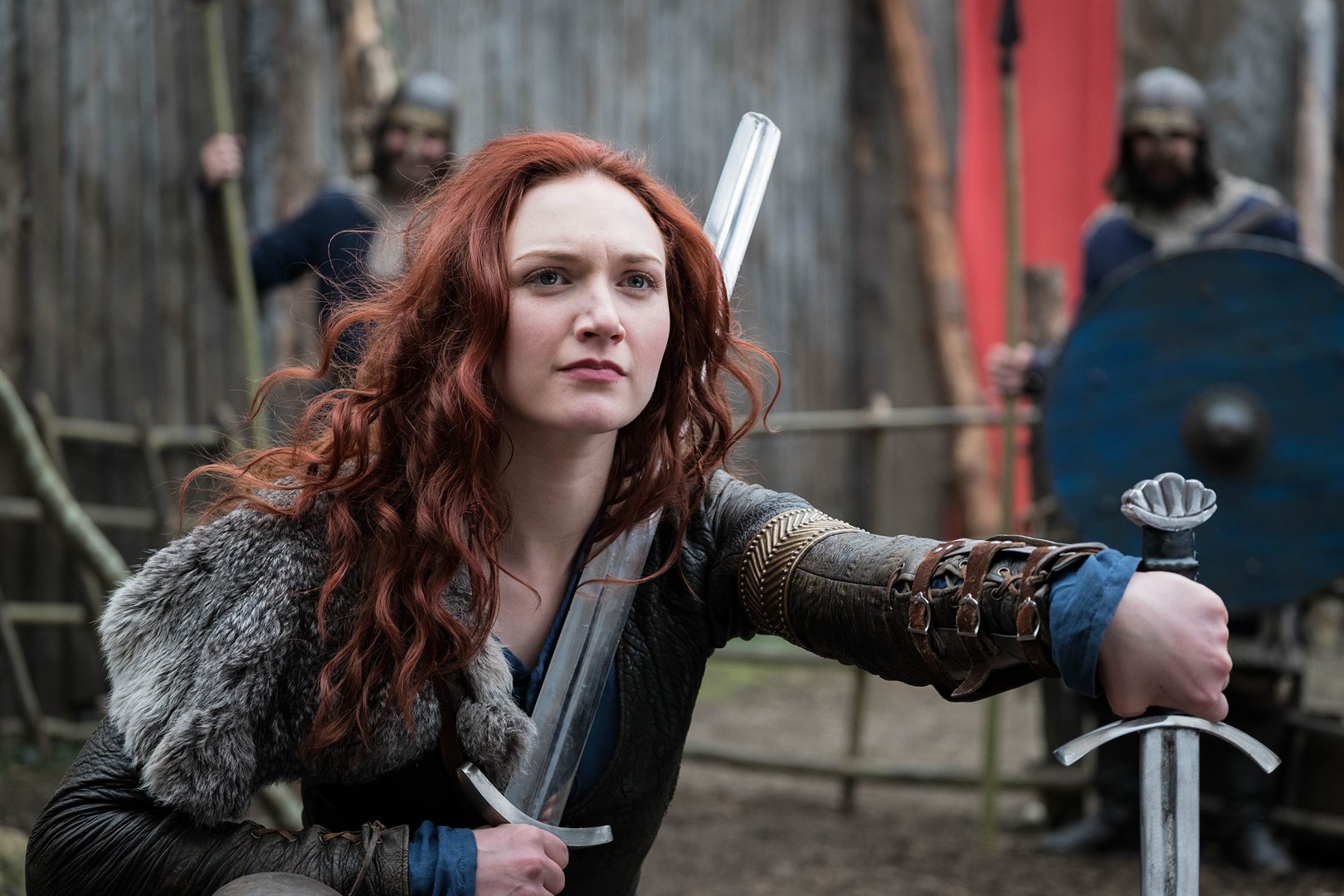 ★★★
★★★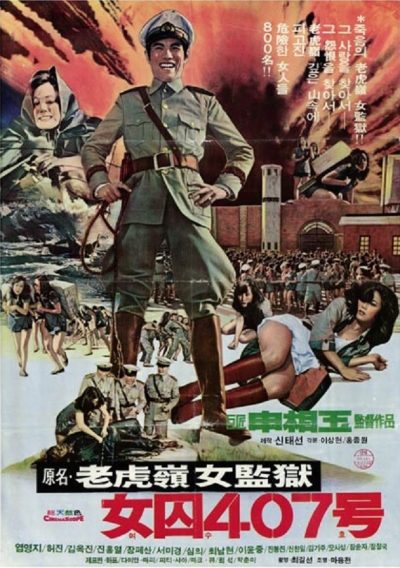 An apparent knock-off of Japan’s
An apparent knock-off of Japan’s  Moving onto part two, things have… changed. Part one ended with its sole survivor sailing off in a boat. This opens with its two heroines, Kuan Mou-Hua (Yip) and Kao Chuan Tze (Heo), back running through the jungle, apparently escaping from… something. I actually watched this part first, and initially presumed the specifics were all explained in the previous installment. I can now confidently state: nope. Like so much here, even down to the location, it’s unclear. Perhaps the untranslated captions shed light on this; the dubbing (the version I saw was in German with English subs!) certainly doesn’t.
Moving onto part two, things have… changed. Part one ended with its sole survivor sailing off in a boat. This opens with its two heroines, Kuan Mou-Hua (Yip) and Kao Chuan Tze (Heo), back running through the jungle, apparently escaping from… something. I actually watched this part first, and initially presumed the specifics were all explained in the previous installment. I can now confidently state: nope. Like so much here, even down to the location, it’s unclear. Perhaps the untranslated captions shed light on this; the dubbing (the version I saw was in German with English subs!) certainly doesn’t. While initially released as a film, what’s reviewed here is the extended cut, screened as four 45-minute episodes on Russia’s Channel One in May 2016. This is easily available, on both Amazon Prime and
While initially released as a film, what’s reviewed here is the extended cut, screened as four 45-minute episodes on Russia’s Channel One in May 2016. This is easily available, on both Amazon Prime and 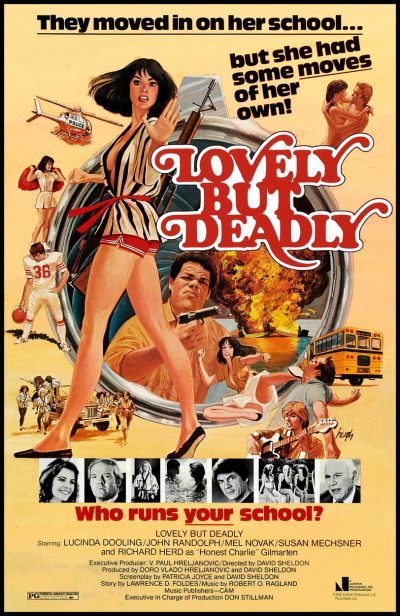 After her brother drowns while high on drugs, Mary Ann “Lovely” Lovitt (Dooling) goes undercover at his school, Pacific Coast High, in order to root out the dealers responsible for his death. She discovers that the problem is far larger than is admitted, with those involved, and includes not just some of the most revered pupils e.g. star players on the football team (and, on more than one occasion, their jealous girlfriends!). A number of adults are also culpable, including leading school boosters, all the way up to leading local businessman ‘Honest Charley’ Gilmarten (Herd). Fortunately, Mary Ann is an expert in martial-arts, so proves more than capable of defending herself when attempts are made to dissuade her from investigating further.
After her brother drowns while high on drugs, Mary Ann “Lovely” Lovitt (Dooling) goes undercover at his school, Pacific Coast High, in order to root out the dealers responsible for his death. She discovers that the problem is far larger than is admitted, with those involved, and includes not just some of the most revered pupils e.g. star players on the football team (and, on more than one occasion, their jealous girlfriends!). A number of adults are also culpable, including leading school boosters, all the way up to leading local businessman ‘Honest Charley’ Gilmarten (Herd). Fortunately, Mary Ann is an expert in martial-arts, so proves more than capable of defending herself when attempts are made to dissuade her from investigating further. Early 20th-century pulp-fiction author Howard Philips Lovecraft created a substantial corpus of writing, mainly in the short story format and mostly in the form of horrific science fiction which in many ways reads like classic supernatural fiction. The most enduring body of his work has been the novellas and stories making up what has come to be called his Cthulhu Mythos, based on the premise that the prehistoric Earth was dominated by the Great Old Ones, or Elder Gods, malevolent and repulsive, but very powerful and dangerous, alien beings who were ultimately dethroned by another alien race, and whose hidden remnants want to regain their past dominance. A number of Lovecraft works present the idea that these beings have an evil and often murderous cult of human worshipers, handed down from the dawn of mankind, who seek to further their return to power. Numerous later writers have been inspired by HPL’s example to create their own pastiches and spin-offs of the Mythos. Brent Nichols’ self-published Gears of a Mad God novella series (there are six in all), of which this book –set in Canada in May 1921, mainly on Vancouver Island– is the opener, is one of these spin-offs. One of my Goodreads friends gave this one a favorable review; and since I’m a Lovecraft fan and the novella is free for Kindle and relatively short at 98 pages, I downloaded it.
Early 20th-century pulp-fiction author Howard Philips Lovecraft created a substantial corpus of writing, mainly in the short story format and mostly in the form of horrific science fiction which in many ways reads like classic supernatural fiction. The most enduring body of his work has been the novellas and stories making up what has come to be called his Cthulhu Mythos, based on the premise that the prehistoric Earth was dominated by the Great Old Ones, or Elder Gods, malevolent and repulsive, but very powerful and dangerous, alien beings who were ultimately dethroned by another alien race, and whose hidden remnants want to regain their past dominance. A number of Lovecraft works present the idea that these beings have an evil and often murderous cult of human worshipers, handed down from the dawn of mankind, who seek to further their return to power. Numerous later writers have been inspired by HPL’s example to create their own pastiches and spin-offs of the Mythos. Brent Nichols’ self-published Gears of a Mad God novella series (there are six in all), of which this book –set in Canada in May 1921, mainly on Vancouver Island– is the opener, is one of these spin-offs. One of my Goodreads friends gave this one a favorable review; and since I’m a Lovecraft fan and the novella is free for Kindle and relatively short at 98 pages, I downloaded it.
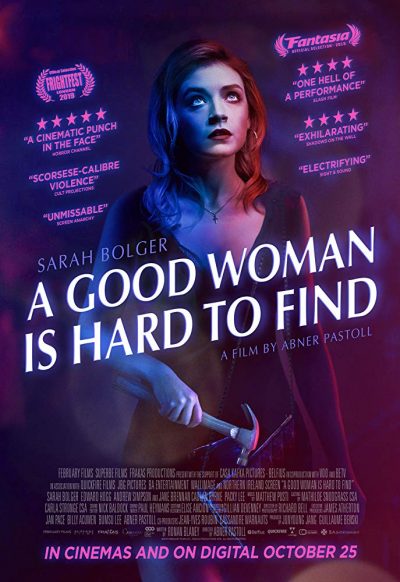 2020’s first seal of approval goes to this uber-gritty Irish film, starring Sarah Bolger, whose most familiar to us from Into the Badlands. While her GWG creds there are overshadowed by the likes oE Emily Beecham, safe to say Bolger makes up for lost time here. She plays single mother Sarah Collins, who is struggling to come to terms with the recent, unsolved murder of her husband. Barely managing to make ends meet, her life is upended when entry-level criminal Tito (Simpson) breaks in, seeking sanctuary. He has stolen some drugs belonging to top boss Leo (Hogg), and offers Sarah a cut of the proceeds if she’ll act as his safe-house. Very reluctantly, she agrees. Needless to say, it doesn’t go as they plan.
2020’s first seal of approval goes to this uber-gritty Irish film, starring Sarah Bolger, whose most familiar to us from Into the Badlands. While her GWG creds there are overshadowed by the likes oE Emily Beecham, safe to say Bolger makes up for lost time here. She plays single mother Sarah Collins, who is struggling to come to terms with the recent, unsolved murder of her husband. Barely managing to make ends meet, her life is upended when entry-level criminal Tito (Simpson) breaks in, seeking sanctuary. He has stolen some drugs belonging to top boss Leo (Hogg), and offers Sarah a cut of the proceeds if she’ll act as his safe-house. Very reluctantly, she agrees. Needless to say, it doesn’t go as they plan.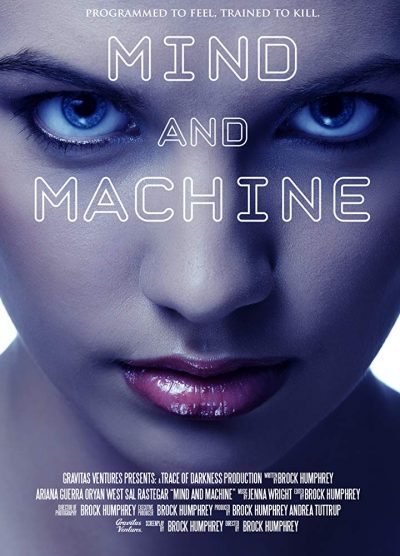 Intelligence without morality to govern it, is psychopathy. So what happens when you create an intelligent machine, but deliberately avoid installing any kind of moral compass? It’s an interesting idea for a film. Not that you’d know it from this unconvincing effort, which sucks the potential out of it. In this near-future – it’s set in 2024, close enough to now, no actual work is required on the part of the makers – androids have become part of everyday society in many roles. Crime boss Isaac Lynch (Restegar) orders technician Leo Cameron (West) to make one without a conscience, so that it can be used as an assassin, saving those pesky hitman fees. Only Leo crafts the robot, Maya (Guerra), in the image of his late wife. On the plus side: he gets to see his wife again. On the other hand: she’s an amoral killer. Didn’t think that through too well, did he?
Intelligence without morality to govern it, is psychopathy. So what happens when you create an intelligent machine, but deliberately avoid installing any kind of moral compass? It’s an interesting idea for a film. Not that you’d know it from this unconvincing effort, which sucks the potential out of it. In this near-future – it’s set in 2024, close enough to now, no actual work is required on the part of the makers – androids have become part of everyday society in many roles. Crime boss Isaac Lynch (Restegar) orders technician Leo Cameron (West) to make one without a conscience, so that it can be used as an assassin, saving those pesky hitman fees. Only Leo crafts the robot, Maya (Guerra), in the image of his late wife. On the plus side: he gets to see his wife again. On the other hand: she’s an amoral killer. Didn’t think that through too well, did he? Origin stories are all the rage, it appears. Though it’s probably just coincidence we watched this prequel to
Origin stories are all the rage, it appears. Though it’s probably just coincidence we watched this prequel to